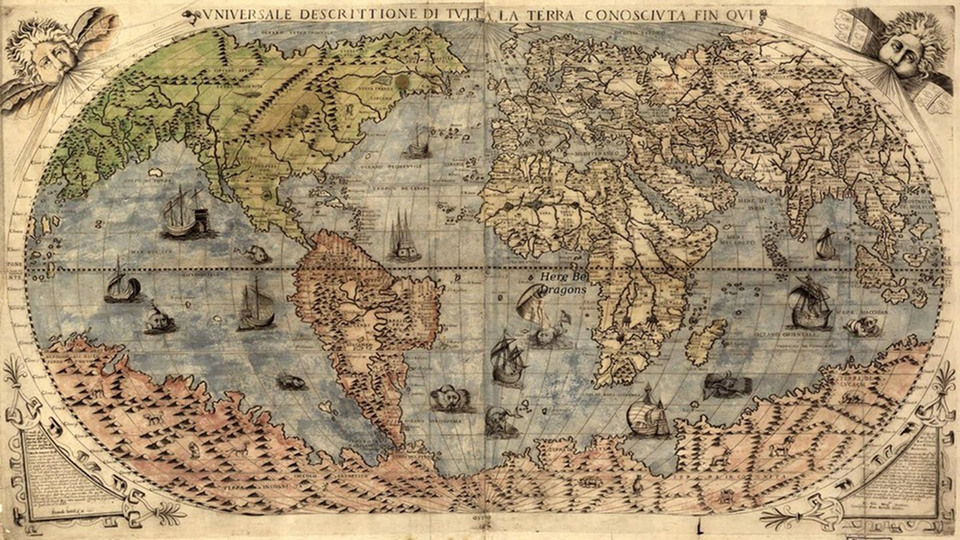Here Be Dragons
Mapping the Story
I've been reading The Library at Night by Alberto Manguel. Apart from the fact that this book is brimming with knowledge and wisdom and stylistic smoothness, one passage struck me in regard to all the commotion going on in the discourse of digital publishing and modern storytelling.
The following is a lengthy quote, but it's worth considering:
In our time, bereft of epic dreams — which we've replaced with dreams of pillage — the illusion of immortality is created by technology. The Web, and its promise of a voice and a site for all, is our equivalent of the mare incognitum, the unknown sea that lured ancient travelers with the temptation of discovery. Immaterial as water, too vast for any mortal apprehension, the Web's outstanding qualities allow us to confuse the ungraspable with the eternal. Like the sea, the Web is volatile […]. Its virtue (its virtuality) entails a constant present — which for medieval scholars was one of the definitions of hell. Alexandria and its scholars, by contrast, never mistook the true nature of the past; they knew it to be the source of an ever-shifting present in which new reader engaged with old books which became new in the reading process. Every reader exists to ensure for a certain book a modest immortality. Reading is, in this sense, a ritual of rebirth.
—Alberto Manguel: The Library at Night, p. 28.
Which takes us to the rebirth of the story. We should not try to reinvent the book. What it does and can do has been proven through centuries. It does what it's supposed to do — sometimes crappily (like some cheap editions with two slabs of paper as a cover, disintegrating pages after the first reading, ugly typography and smeary ink), sometimes in an incredibly beautiful way that electronic/digital media cannot hope to equal (the smell and texture of the page, the physically different volume and weight in your bag, the type and pictures in graspable three-dimensional presence).
There are other ways to tell a story, though. And really: those unexplored, uncharted paths are the mare incognitum that keeps luring us into doing what we started with The Last Website. Slowly exploring these paths is indeed giving birth to the story over and over again. It is not so much reinventing it (we wouldn't be so insolent or presumptuous to believe that). It's more like the Darwinian origin of the species: with the structure of The Last Website we represent a tiny branch of the story tree. But, as we believe, a particularly beautiful branch — flexible, transformable, with leaves and buds, with the breeze drawing across it, making a marvelous sound to the accustomed ear.
What should furthermore not be neglected: this is still reading. True, it is not exclusively text, but rather letters, colors, and sinus waves in interaction. The experience we draw from this, however, still remains a reading experience. With all the problems — conceptual, intellectual, and technical — there still remains the most hopeful prospect of Manguel's proclamation: constant renewal throughout (dis)solution.


